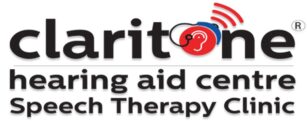Understanding
Speech Disorders
Speech is essential for communication, relationships, and social development. When speech disorders impact articulation, fluency, or voice, they can affect confidence and daily interactions
Why Early
Intervention Matters
Timely therapy can enhance speech clarity, boost communication skills, and improve self-confidence. Early intervention helps individuals express themselves better, fostering meaningful interactions and a higher quality of life

Types of Speech Disorders
Fluency Disorders
Disruptions in the flow, rhythm, effort and speed of speech.
Speech Sound Disorders
Difficulty in articulatory movements. Aka Articulation disorder.
Neurological Speech Disorders
The control and coordination of speech muscles
Fluency Disorders
Fluency disorders are characterized by disruptions in the flow, rhythm, effort and speed of speech. These disorders can make speech sound fragmented, halted, or irregular.
Stuttering is characterized by the repetition of sounds, syllables, or words, often accompanied by physical tension and a visible struggle. Those who stutter may display secondary behaviors, such as blinking or facial grimacing, as they navigate the ebb and flow of their speech.
This condition weaves a complex tapestry of challenge and resilience, revealing the profound interplay between voice and physical expression.
Cluttering is marked by a rapid or irregular speech rate, leading to omitted sounds or syllables. This disorganized speech can become challenging to understand, lacking the smooth rhythm and coherence typically expected in fluent communication. The result is a speech pattern that feels jumbled and uneven, disrupting the natural flow of conversation.
This condition intertwines the traits of both stuttering and cluttering, where individuals face a dual challenge of disrupted fluency and rapid, disorganized speech patterns. The result is a complex interplay of speech difficulties, blending the hesitations and repetitions of stuttering with the chaotic, uneven flow of cluttering.

Speech Sound Disorders
Speech sound disorders involve difficulties in articulating specific sounds correctly. These challenges can stem from two basic aspects of sound production.
Phonetic errors arise from difficulties in the motor production of sounds, while phonemic errors involve challenges in using sound patterns to differentiate meaning.
These errors can result in substitutions, omissions, distortions, or additions of sounds, significantly affecting speech clarity and communication effectiveness.
Conditions such as cleft palate or other structural anomalies of the mouth and face can significantly impact speech production. These physical differences create challenges in articulating sounds correctly due to the altered oral structures, making clear and effective communication more difficult.

Neurological Speech Disorders
Neurological speech disorders are caused by impairments in the nervous system that affect the control and coordination of speech muscles. These disorders can result from brain injuries, degenerative diseases, or other neurological conditions, leading to difficulties in producing clear and coordinated speech.
Apraxia of speech is a neurological disorder characterized by the inability to properly sequence and coordinate speech movements. Despite having in-tact muscle strength and comprehension, individuals struggle to deliberately move their speech muscles to form sounds and words.
This condition creates a disconnect between the brain's intentions and the physical execution of speech, resulting in inconsistent and challenging communication.
Dysarthria occurs when muscle weakness or paralysis affects the muscles used for speech production. This neurological condition can result from conditions like stroke, brain injury, or degenerative neurological diseases, leading to slurred, slow, or difficult-to-understand speech.
The speech muscles may lack precision, strength, or coordination, creating significant challenges in verbal communication.

Why Choose Claritone?
We offer personalized treatment approaches tailored to each individual’s needs
Comprehensive Assessments
We conduct detailed evaluations to understand speech and communication challenges
Personalized
Therapy Plans
Customized treatment plans designed for effective speech improvement
